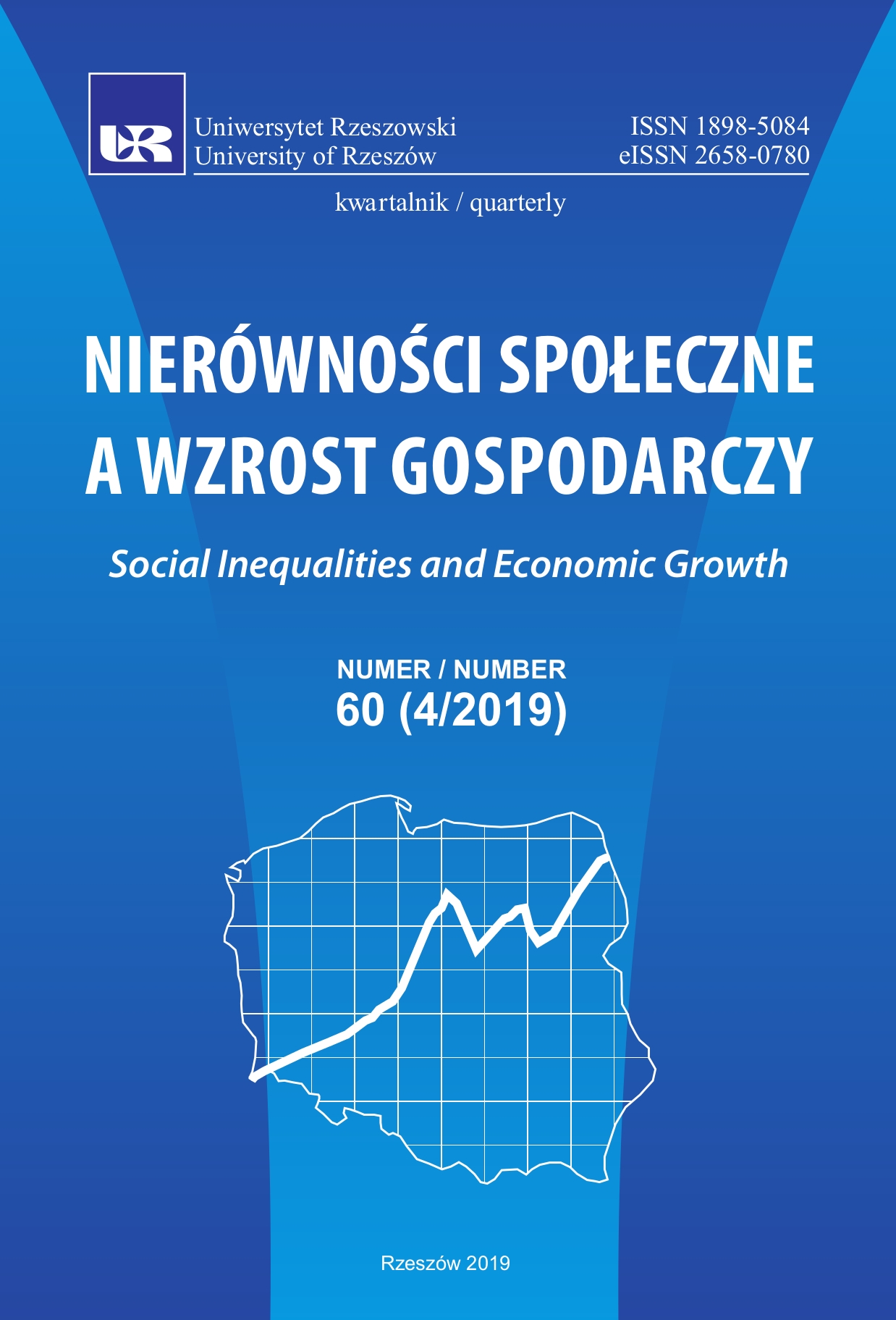Expansionary monetary policy and its side effects
DOI:
https://doi.org/10.15584/nsawg.2019.4.4Keywords:
financial crisis, macroeconomic policy, social cohesionAbstract
The goal of this paper is to show that, although a non-standard monetary policy conducted by the major central banks is quite efficient in stabilising the post-crisis economy, there are a few important side effects of such policy. One of the most important side effects of a super-expansionary monetary policy is creating an economic environment that favours the financial sector and capital owners over the working class, leading to higher income inequalities. The low level of the central bank’s interest rate does not mean that every economic unit has access to cheap capital. The ultra-low cost of capital can be experienced by only the few selected players – financial institutions and strong corporations. The same can be said about the financing borrowing needs of the state – only a few governments are able to borrow very cheaply and others have to face the huge power of the financial market, which leads to a growing income gap between societies. The text has a mainly descriptive character but a few statistics are provided to support main paper’s thesis.Downloads
Download data is not yet available.
Downloads
Published
2020-11-13
How to Cite
Tomkiewicz, J. (2020). Expansionary monetary policy and its side effects. Social Inequalities and Economic Growth, 4(60), 61–73. https://doi.org/10.15584/nsawg.2019.4.4
Issue
Section
Articles
License
Copyright (c) 2019 University of Rzeszow

This work is licensed under a Creative Commons Attribution-ShareAlike 4.0 International License.


